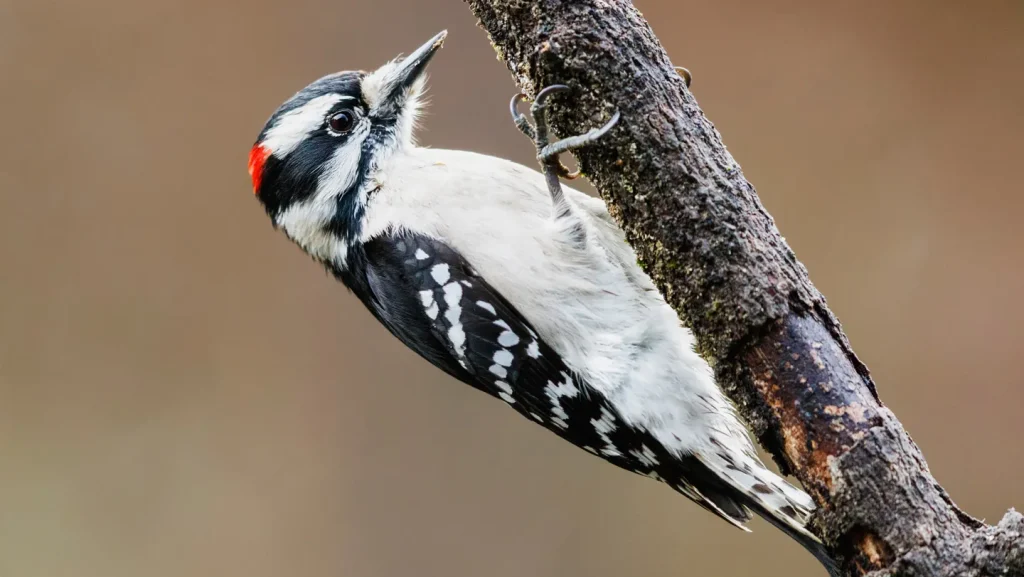The Surprising Rhythms of Woodpeckers: More Than Just a Headbanging Act
Recent research has uncovered fascinating details about the complex physiological mechanisms that enable woodpeckers to perform their characteristic hammering. While we’ve long admired these birds for their impressive drilling abilities, scientists have now revealed that woodpeckers are essentially grunting with each strike—much like tennis players who exhale forcefully during powerful shots. This discovery offers new insights into how these remarkable birds maintain their rapid, consistent pecking without suffering brain injury.
A team of researchers from Brown University, led by behavioral physiologist Nicholas Antonson, conducted an innovative study on eight wild downy woodpeckers (Dryobates pubescens). The scientists fitted each bird with a tiny custom backpack containing electrodes inserted into eight different muscles to record electrical signals during drilling and tapping behaviors. These signals were synchronized with high-speed video footage captured at 250 frames per second, allowing the team to analyze the precise coordination between muscle movements and respiratory patterns. After a few days of observation and recovery, all birds were safely released back into the wild.
What emerged from this research was evidence of a remarkable choreography between muscle contractions and breathing patterns. The woodpecker’s body functions similarly to a human using a hammer—certain neck muscles stiffen at the moment of impact to reduce energy loss, just as our wrist muscles do when hammering. Before striking, the birds brace themselves using their tail muscles, while the power of each strike is largely determined by a single muscle in the hip. Perhaps most surprisingly, woodpeckers exhale with each impact and take quick 40-millisecond inhalations between strikes, allowing them to maintain a rhythm of up to 13 strikes per second with remarkable consistency.
This breathing pattern bears a striking resemblance to that of songbirds during vocalization, suggesting that woodpecker tapping might be more closely related to singing than previously thought. Daniel Tobiansky, a behavioral neuroscientist not involved in the study, notes that this connection provides valuable insights into how nonvocal acoustic communication may have evolved in birds. The research challenges us to reconsider drumming behavior not just as a mechanical action for feeding or nesting, but as a sophisticated form of communication with similarities to vocal expression.
The intricate coordination revealed by this study helps explain how woodpeckers can strike hundreds of times per minute at forces 20 to 30 times their body weight without suffering concussions. While previous research has focused primarily on how woodpeckers avoid brain injury during these impacts, this new study addresses the fundamental question of how the behavior is physically possible in the first place. The research demonstrates that what appears to be simple pecking is actually an extraordinarily complex behavior requiring precise timing of multiple muscle groups throughout the body.
Having gained these insights into the mechanics of woodpecker hammering, Antonson plans to continue exploring extreme behaviors in other species. This “look under the hood” of woodpecker physiology not only enhances our understanding of these fascinating birds but also provides potential insights into biomechanics that could have applications in various fields, from sports medicine to the development of impact-resistant materials and structures. The humble woodpecker, it seems, still has much to teach us about the marvels of biological engineering.


